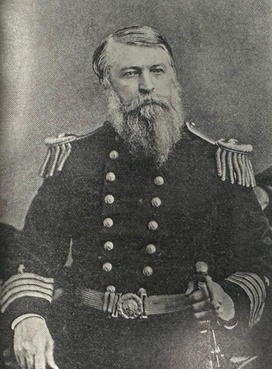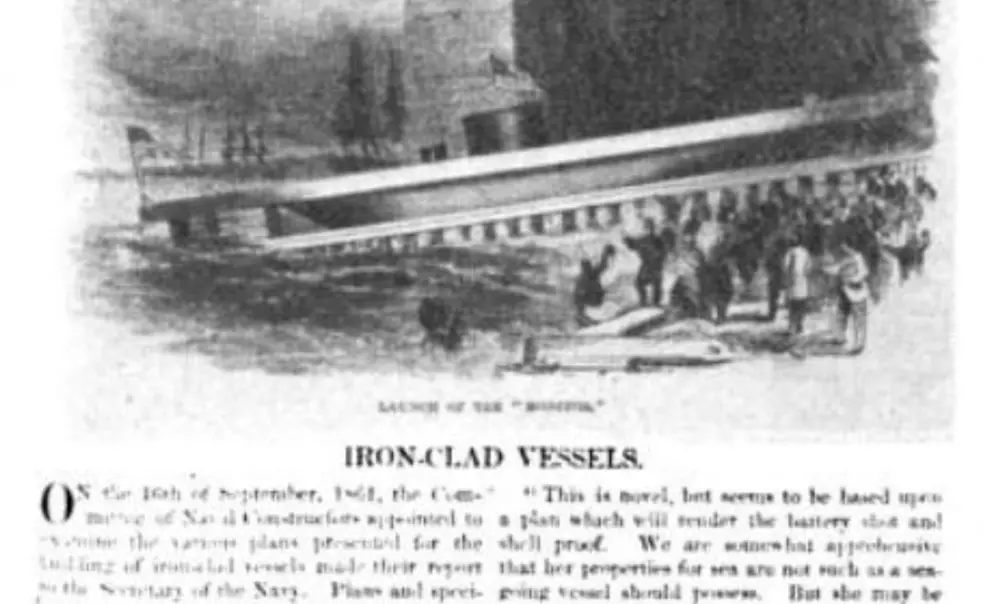An Unrivalled Civil War Collection
Princeton Profits from the Untiring Work of John Shaw Pierson ’40.
Editor’s note: This story from 1933 contains dated language that is no longer used today. In the interest of keeping a historical record, it appears here as it was originally published.
Wars, being a departure from normal routine, leave a printed record out of all proportion to the records of the intervening periods of peace. Much of this war literature, however, is of an ephemeral nature. Unless gathered at once, it is apt to disappear forever. In many cases the oblivion is well deserved, but valuable material often vanishes along with the trash.
Forty years of constant vigilance on the part of a Princeton alumnus gave to our library a collection of Civil War material, a considerable portion of which is not to be found elsewhere. Too few realize the unique value of the Pierson Collection with its 6,500 books and 2,000 pamphlets, resting behind a grilled cage over the western arch of the library. Upton Sinclair came to Princeton to utilize it in preparing his novel, Manassas; James Boyd ’10 used it in writing his Marching On; and an occasional student of the Civil War period has made a pilgrimage for a similar purpose. Many other studies of that period would have profited had their authors done likewise.
A Labor of Love
The collection was a constant labor of love on the part of John Shaw Pierson of the Class of 1840. Following his graduation, he practiced law in New York City until 1850, when he became marine agent of the New York Bible Society, holding that position until he retired in 1883. His chief duty in that capacity consisted of placing libraries of reading matter (not only Bibles) aboard vessels sailing from the port of New York for the use of the seamen on the voyages which were often extremely tedious in the days of sailing ships.

The gathering of those marine libraries gave Mr. Pierson an excellent opportunity to pick up books for his Civil War collection. Probably every month, if not every week, for a period of forty years found him browsing among the book stalls of Fourth Avenue or wherever the book district was in those days. An old report of a Princeton librarian states that he also “printed and dispursed through the South several hundred copies of a circular in the librarian’s name, addressed to the alumni of the college, inviting them to supplement his labors by sending such books as they may suppose to present more fully or faithfully, the Confederate side in the struggle.” A large proportion of Princeton men were southerners in that day, and they apparently answered the appeal so readily that a southern librarian could tell Mr. Gerould recently that this is the best collection of Confederate material in the North.
Whatever Mr. Pierson may have spent in the gathering of the collection would have to be multiplied at least tenfold to assemble the same today, and many of the books could not be obtained at any price.
The helpful cooperation of Dr. Ernest C. Richardson, honorary director of the library, has revealed many details of the growth of the collection. Mr. Pierson apparently sent the books on to Princeton as fast as he gathered them. The date of the first gifts is not evident, but there were some in 1869, and by 1874 the total was about 300 volumes. The next year saw 729 additions; the total was 2,000 by 1879, and more than 5,000 by 1898. The donations continued until 1907, the year before Mr. Pierson’s death, when he gave 635 volumes. In addition, he gave the library some much-needed bindery equipment.
Many Unique Volumes
There are three of four larger Civil War collections in the country, but the Pierson Collection is unique from the qualitative standpoint. More than a quarter of its titles are not to be found in the Library of Congress and several hundred do not appear in any of the other Civil War collections.
Mr. Pierson interpreted the Civil War in the broadest sense, and nearly half the titles lie outside the purely military and naval field. There is a particularly rich collection on slavery, numbering more than 500 titles, the range of which can be judged from such samples as Negro-Mania, Cannibals All, or Slaves without Masters, Slaveholding not Sinful (written at New Brunswick, nearby, in 1856), God against Slavery, Slavery a Divine Institution, and, finally, typical of lurid narratives of plantation floggings and auction blocks, Incidents in the Life of a Slave Girl, written by Herself.
Many other books deal with the discussions in the period leading up to the war, containing plenty of political, social and economic material. Campaign literature includes The Republican Pocket Pistol, a Collection of Facts for Freemen, in 1856, and The Bobolink Minstrel – Republican Songster for 1860. There are some 250 volumes of drama and verse, with such gems as Old Glory, Army Mule; Chronological Table of Battles of the Civil War in Verse; Sneak yelepid Copperhead; Bride of Gettysburg; and Daisy Swain, Flower of the Shenandoah. In a similar class are the 300-odd volumes of Civil War fiction. In this group, such novels as The Rebel General’s Loyal Bride and Clotille, the Colored Heroine do not seem to have enjoyed the long vogue of Frank before Vicksburg and Frank on a Gunboat, written by C.A. Fosdick under the pseudonym of Harry Castlemon.
There are numerous books on constitutional law, trials, and courts martial, admiralty cases, foreign relations and foreign opinions, Confederate emigration, and reconstruction. Then, too, there are many miscellaneous titles, the wide range of which is indicated by such works as Four Years in Secessia, Medical Botany, the Resources of Southern Fields and Forests, Instantaneous Rigor-Mortis Observed upon the Battlefield, and Mule-Breeding, Training, and Uses to Which He May Be Put. Several volumes of newspaper clippings, gathered by Mr. Pierson during the war, are included in the collection.
Naturally, the collection is rich in military and naval history. Such obvious works as the Official Record, Battles and Leaders, Grant’s Memoirs, and the little blue series of campaign studies are to be found in most libraries. The special value of the Pierson Collection for military and naval studies lies in the hundreds of volumes of regimental histories and recollections of less conspicuous individuals, which give an excellent opportunity for running down details. There are drill, ordnance, and medical manuals for both armies, with similar material for the navies. Military and naval biography is to be found in large quantities, Grant naturally leading with some fifty volumes, while scores of bewhiskered major generals, brigadiers, and commodores find dusty immortality in the middle shelves of the section. A student can doubtless find a fairly intimate account of almost every skirmish by land and sea during the whole four years.
A preliminary reconnaissance of the collection can be made at a distance by consulting the printed list. * Titles, however, can be misleading, and some of the choicest matter is to be found hidden under most innocuous titles. The proper way to appreciate the collection fully is to browse at leisure among its shelves. Anyone with even the most casual interest in the period is bound to find plenty of interest in those books which Mr. Pierson gathered so carefully for forty years.
* A list of titles is printed in the Princeton University Library Classed List (1920), Vol. VI. Pp, 2985-3077. A list and brief description of other Civil War collections is in E. C. Richardson, An Index Directory to Special Collections in North America (1927), pp. 95, 159.
This was originally published in the February 10, 1933 issue of PAW.












No responses yet